The best of teams analyzes their opponents before entering any competition against them. To deliver that winning blow takes risks.
The risks facing the United States at the end World War II were monumental.
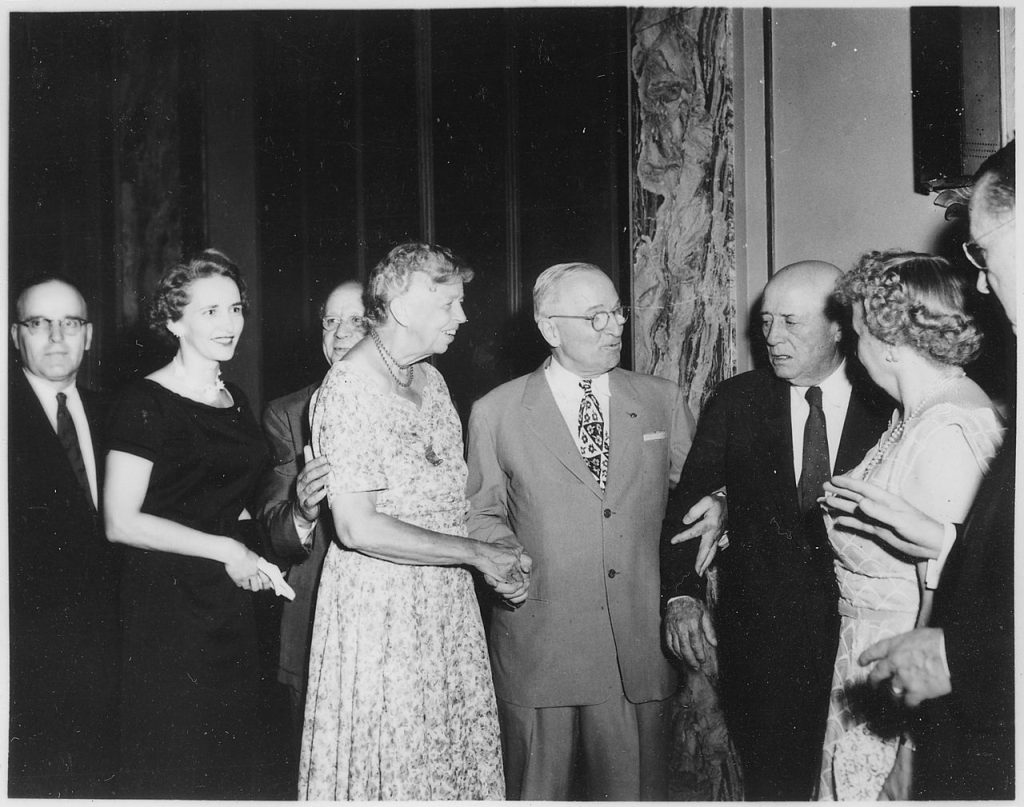
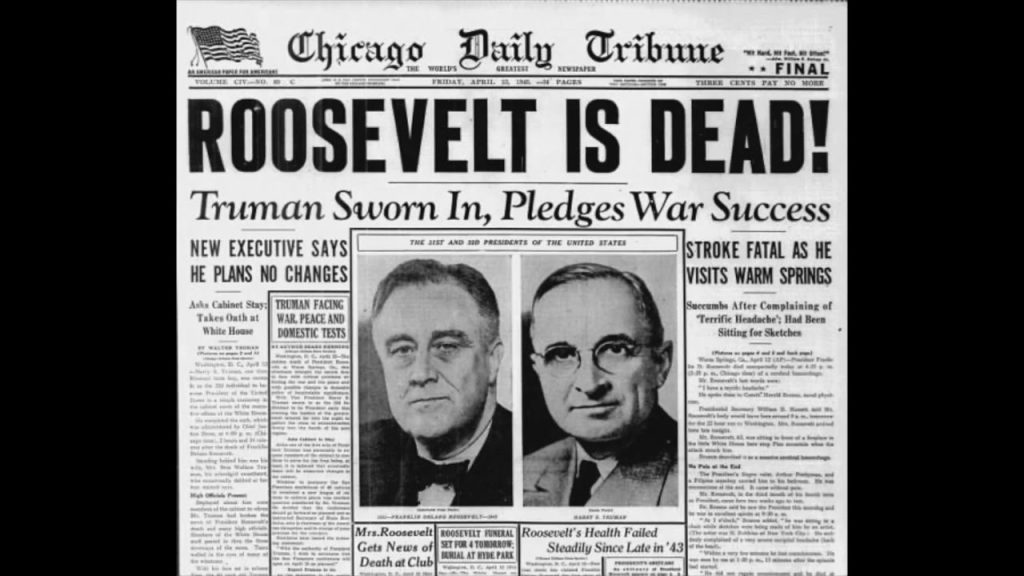
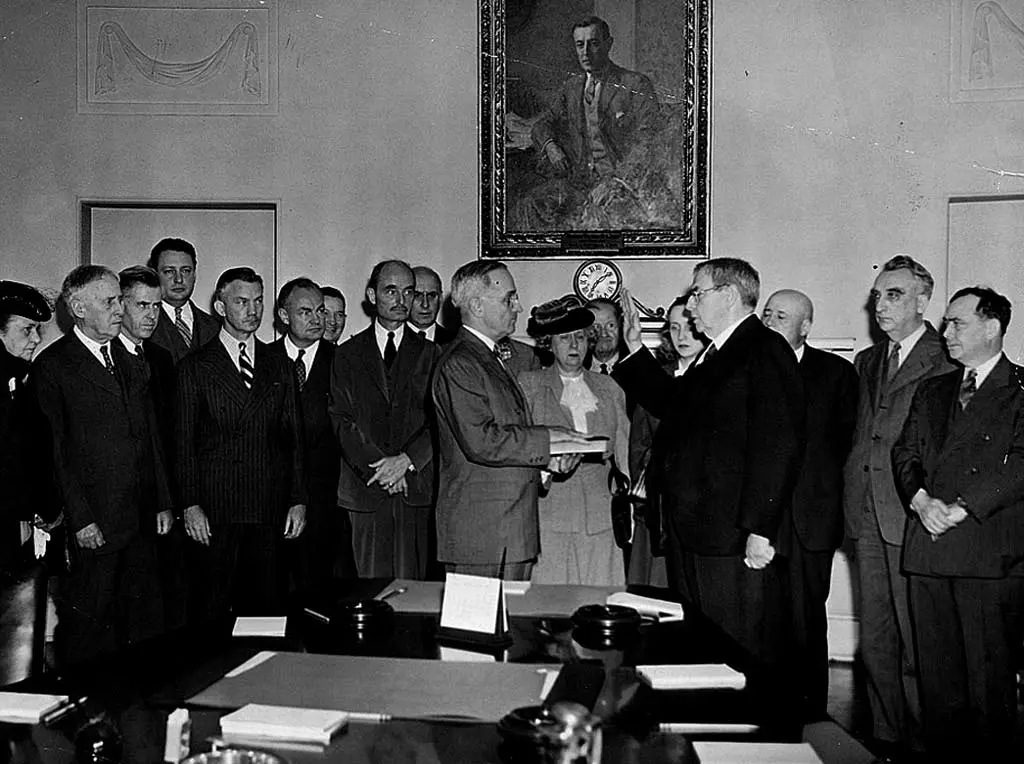
Taking the helm after the death of President Roosevelt in April of 1945, President Truman and his military brass had to consider the enemy.
When the Germans surrendered in May of 1945, the US immediately turned its focus toward the Pacific Theater. Their pressing task unequivocally became how to persuade the Japanese to lay down their guns.
Japan refused to surrender even while facing their obvious defeat. The Land of the Rising Sun was starving, with dwindling resources for continued battle after their years of attacking numerous countries. They ignored the warnings sent by the US, preparing their men, women and children to fight against a full throttled allied invasion.
The U.S. was fighting a nation who believed their Emperor Hirohito was a god. It was apparent that the Japanese held themselves as racially superior, their xenophobic attitude toward westerners left little mercy as their notorious brutality became world renown. Thus far, Japan had enslaved, murdered, raped, mutilated, beheaded, imprisoned and tortured thousands of their captives. Locals, nuns, priests, doctors, nurses and, of course, the allied soldiers fell prey to an indoctrinated killing machine.
The troubling history spoke for itself. In December of 1937, without provocation, in a three-week span, 300,000 Chinese were butchered by the Japanese military. This included the serial rape of over 20,000 women who were then bayonetted to death or murdered. In one of many accounts during the Rape of Nanking, there was a competition to be the first Imperial Japanese Army officer to behead 100 innocent people.
Prime Minister Hedeki Tojo, known as ‘The Razor’, restructured the notorious Kempeitai, which translates as ‘law soldiers’, after the German Gestapo, empowering them to become one of the most sadistic military police ever, feared by all.
Tojo also had his scientist’s investigate ways to efficiently kill more people. Unit 731 was created to explore chemical and biological warfare. In the name of science 12,000 POWs, Chinese, men, women and children were used for live experimentation. Their deaths were brought about through cruel, unimaginable methods. However, Japan never signed the Geneva Convention, making these murders inconsequential, only a step toward expansionism and building the Nippon Empire
After the Japanese first naval defeat in 75 years at the battle of Midway, Tojo announced to the country that the ‘way of the samurai’ was the only path to the successful building of the new empire. He led with the tight reigns of fear, demanding his troops commit harakiri (to kill oneself) instead of surrendering, that to die in a kamikaze attack is to die a hero. All must be ready to die, including women and children.
In July of 1945, when American troops took Saipan, the stepping stone to the Japanese islands, US troops watched in horror as thousands of civilians committed suicide. Mothers threw their babies off the ‘suicide’ or ‘banzai cliffs’ before jumping into the cresting waves that would drive them against the large boulders below along the shoreline of Saipan. It later would be realized the rulers of Japan worried that if the civilians discovered that the US soldiers were not going to rape and kill them, but would instead feed them and provide medicine, there might be uprisings in the Nippon battle-weary homeland.
As the end approached, with no other ally, Japan was desperate, facing famine, had very few planes, ships and military supplies left, had endured weeks of fire bombings, which killed more than the atomic bombs would. Yet, in face of all this devastation – Japan still resisted surrender.
Consider your enemy, winning blows take risks.
How to stop the brainwashed Japanese with the least loss of lives for all warring opponents was the most important decision facing our President.
Would dropping the atomic bomb garner peace?
I had the pleasure of interviewing Mike Meshii, born in Osaka, who at age 14 understood his fate was to die for his country. He told me children soldiers were given uniforms and wooden guns for practice; they trained crawling under barbed wire until their elbows bled. These children were rarely provided food but were issued a bag to sleep in – anywhere they could find to rest.
Mike had already served in the Imperial Japanese Army for 1 ½ years and, as the allied troops drew nearer, he prepared for the “kessen” last decisive battle on Japanese soil. He told me the bombs dropped by US airplanes Enola Gay followed by the Bockscar saved his life.
In another interview Barney McCallum explained how his ship, the USS Grafton, returned to Oahu with Japanese prisoners captured during the battle on Okinawa which ended in June of 1945. After the prisoners had gone ashore his ship was told to gather with others waiting off the Big Island of Hawaii. When they approached the site, he was awe struck by the vision of the fleet gathered – hundreds of the US battle ships preparing to attack Japan. Barney quickly realized the prospect of the countless lives that could be lost.
Professor Emeritus Bob Harmon who landed on the D Day beaches a few days after the original battle, fought across Europe until Germany surrendered. However, he did not have enough ‘points’ accrued to be honorably discharged. (the point system was how much time you spent in the service before being allowed to either re-enlist or go home) As a young soldier he faced the prospect of being shipped to the Pacific Theater to fight a new kind of enemy, one he deeply feared for their ruthless reputation. Bob told me in one of our many meetings, what he referred to as the “glorious bomb” saved his life, more than likely the lives of millions of soldiers and citizens.
The Risky Decision
After dropping the first bomb on August 6, 1945, ‘Little Boy’, on Hiroshima, and warned there were more bombs, Japan still did not tender any form of surrender. Three days later, in a last-ditch effort to end the war, with American soldiers at the ready for a land attack, a second bomb, ‘Fat Man’, was dropped on Nagasaki.
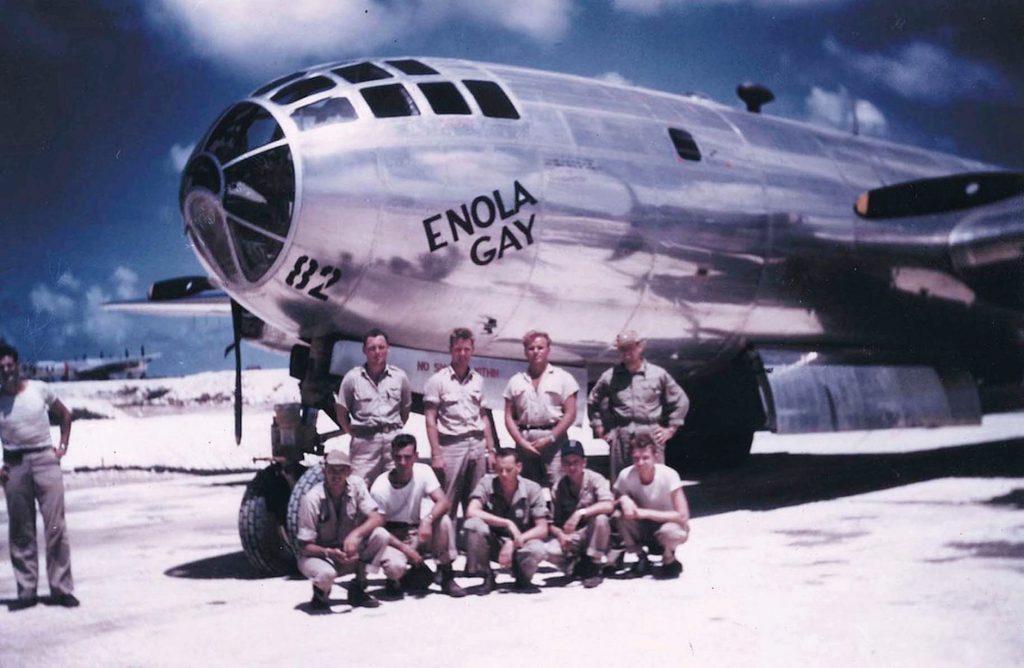
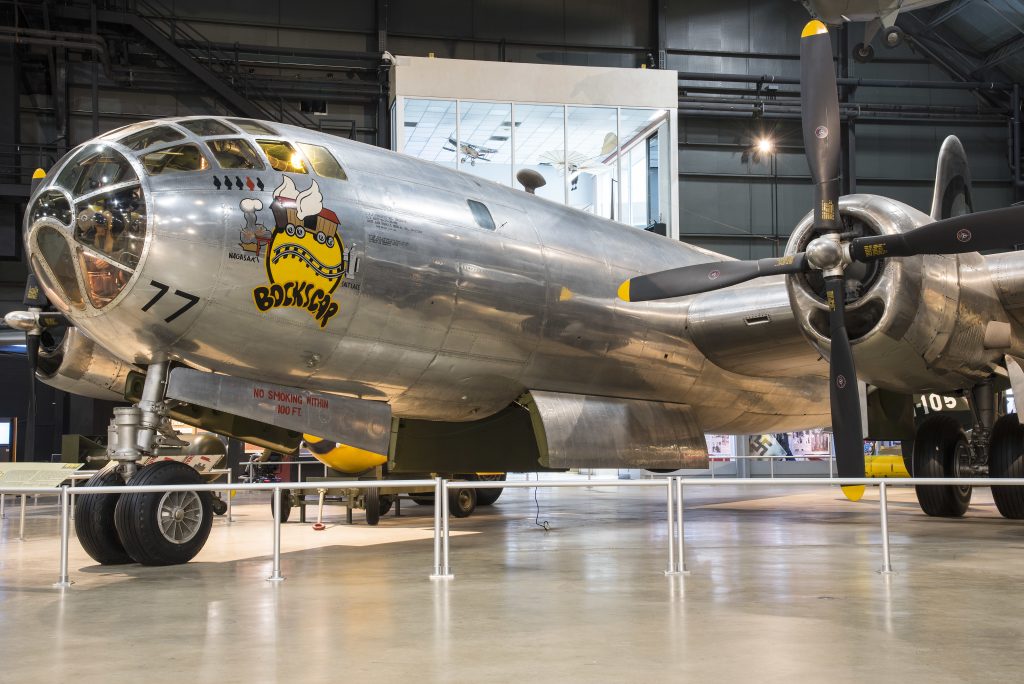
On June 14, 1945, Bob Lewis ferried a modified B-29 known only as Superfortress 44-86292 to the Utah base where the 509th Composite Group was training for its special assignment. Mission leader Paul W. Tibbets—standing at far right, next to Lewis—later named the B-29 after his mother.
“Bockscar” upon delivery to Wright-Patterson Air Force Base, Ohio, in 1961. The nose art was added sometime after the raid against Nagasaki. (U.S. Air Force photo)
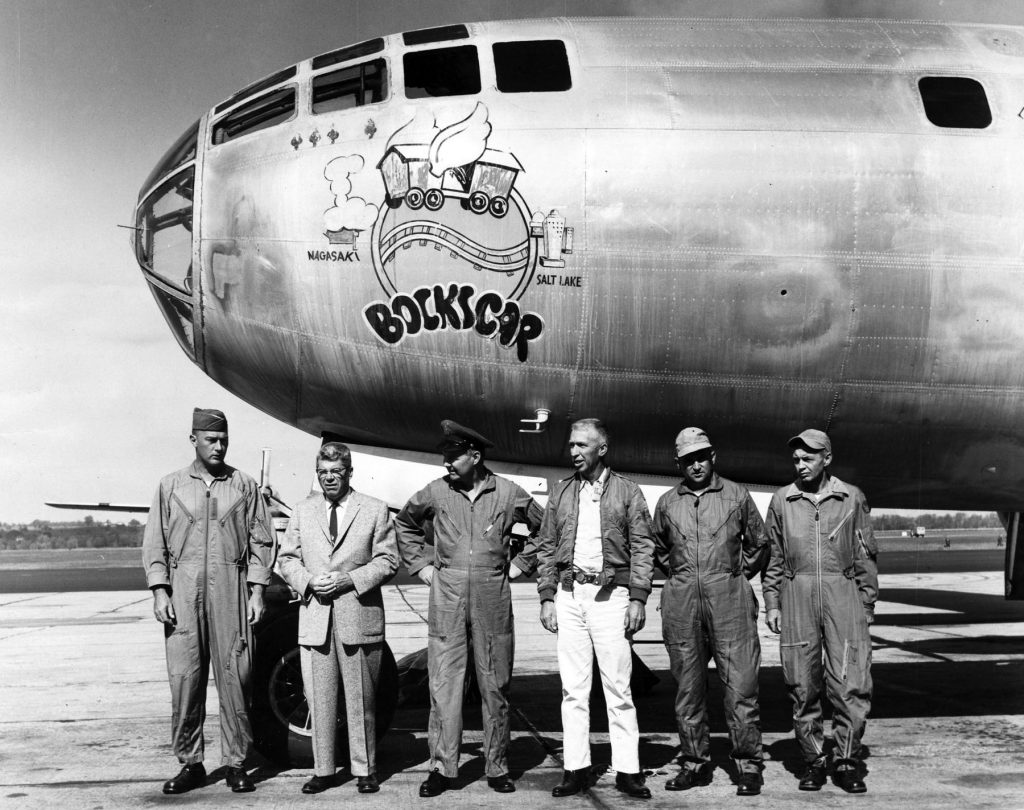
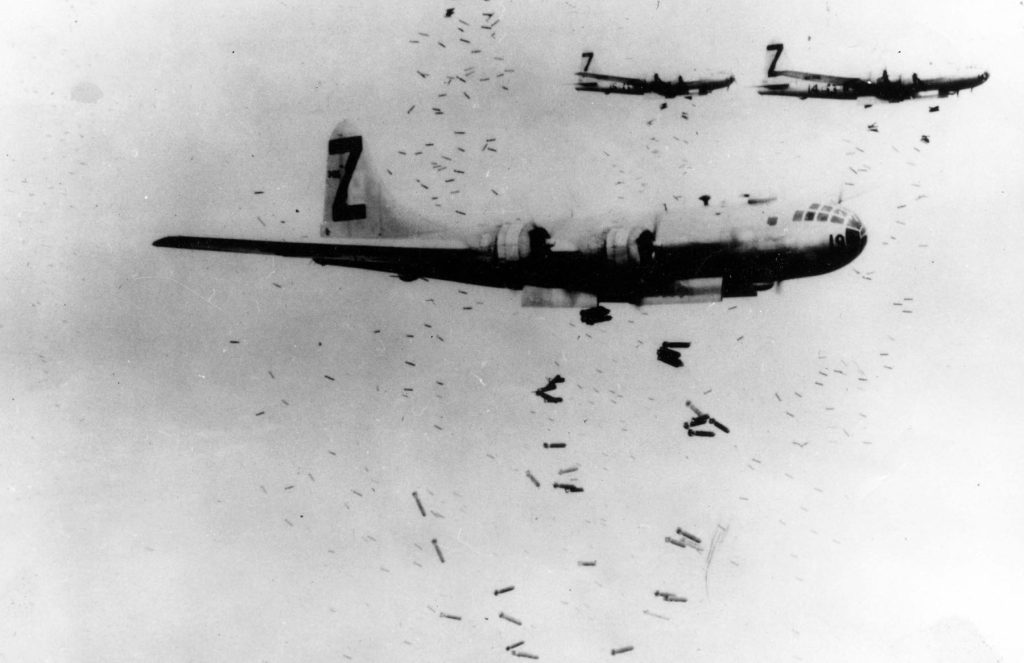
A B-29 releases incendiary bombs on Yokohama in May 1945. (U.S. Air Force photo)
With the casualties mounting and the devastating destruction of his country after the second bomb, the emperor agreed to surrender accepting the Potsdam Declaration. Yet, he had to be defended by his personal army against his own military forces who sought to kill him before he could proceed with the official act. His recording of his decision to surrender was to be sent across the radio airways to his subjects in Japan which would mark the first time the common people would hear his voice. The message had been pre-recorded and hidden in the Ladies In Waiting Chamber for safe keeping prior to its release.
After the signing of the treaty aboard the USS Missouri in Tokyo Bay ending WWII on September 2, 1945, the U.S. troops landed on Japanese soil, with the intent to help rebuild the devastated country. They brought food, medicine and the willingness to reach across the battle lines to provide aid and the restructure of the foundation for today’s Japan.
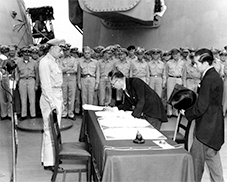
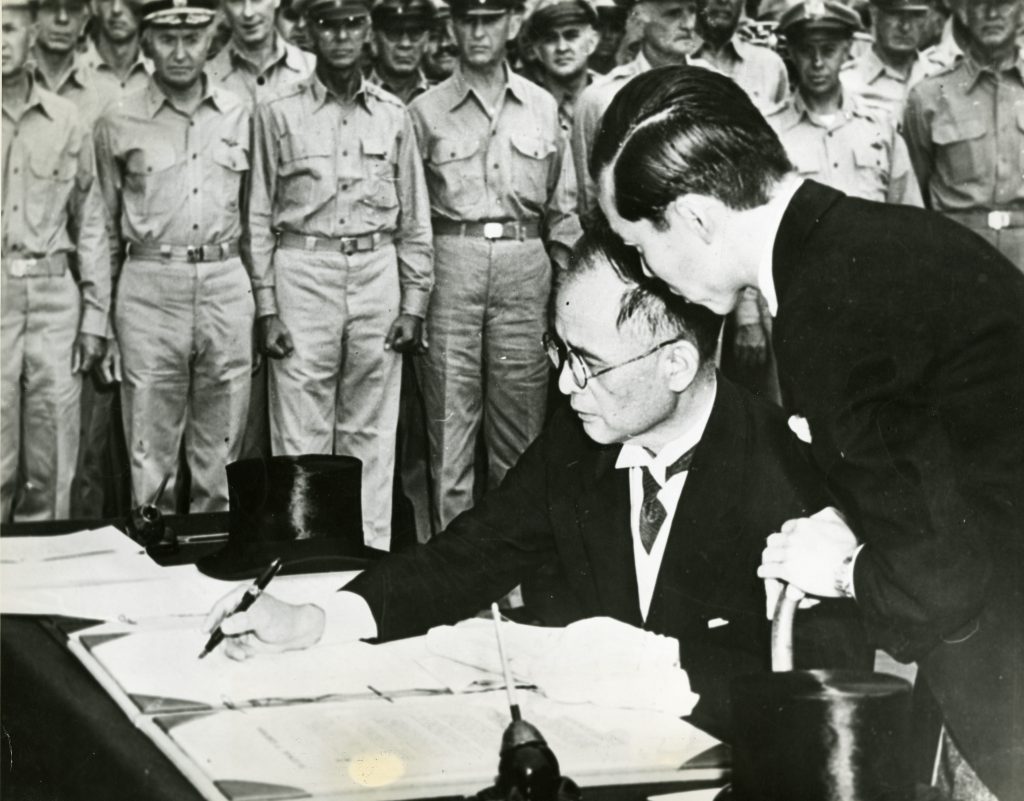
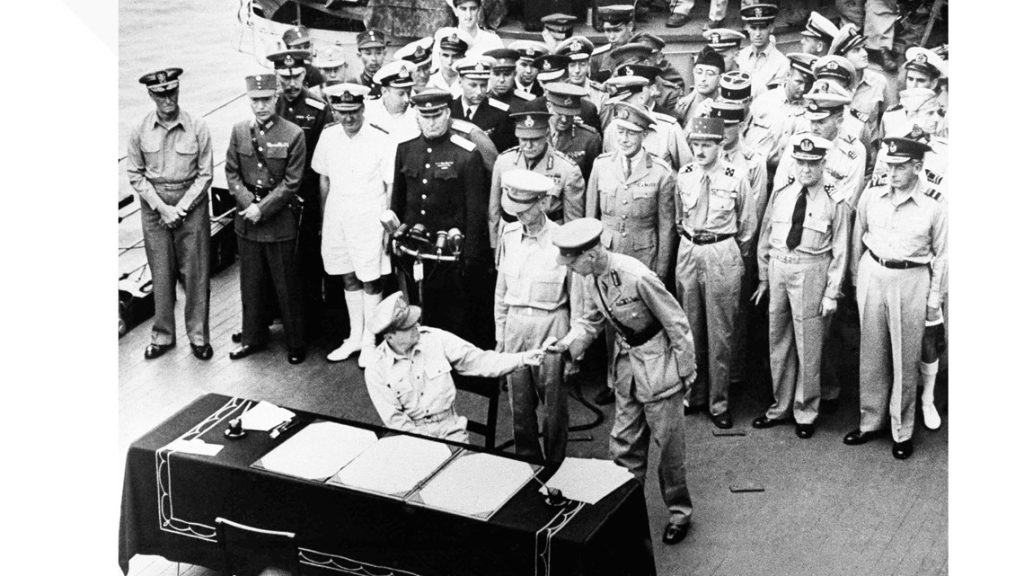
-First Photo: Japanese foreign affairs minister Mamoru Shigemitsu signs the Japanese Instrument of Surrender aboard the USS Missouri in Tokyo Bay as American General Richard K. Sutherland watches, 2 September 1945.
The Price of Peace
We must realize, given the times and the situation, the choice was extremely difficult, yet the options presented by the known enemy were few. The winning blow was an immense risk.
Peace came at a heavy price around the globe. We were truly a world at war, a situation we should never become embroiled in again. We have learned the potential of the atomic bomb and should not go forward lightly with the intent to recreate this event.
Who would have thought that on the early Sunday morning of December 7, 1941, when Japan attacked the United States, drawing us into a world war, that an estimated 416,800 American military personnel would die before the wars end. This number does not reflect civilians.
Most importantly, for those brave men and women who fought, worked, died, sacrificed and suffered to bring us the freedom we have known since VJ Day, Victory over Japan Day, August 14, 1945, we must give our unending gratitude and promise to always seek peace over war.


Aboard the USS Missouri the actual spot on the deck of the ship is marked in remembrance of the signing of the treat ending WWII.
Denise on the deck of the USS Missouri
